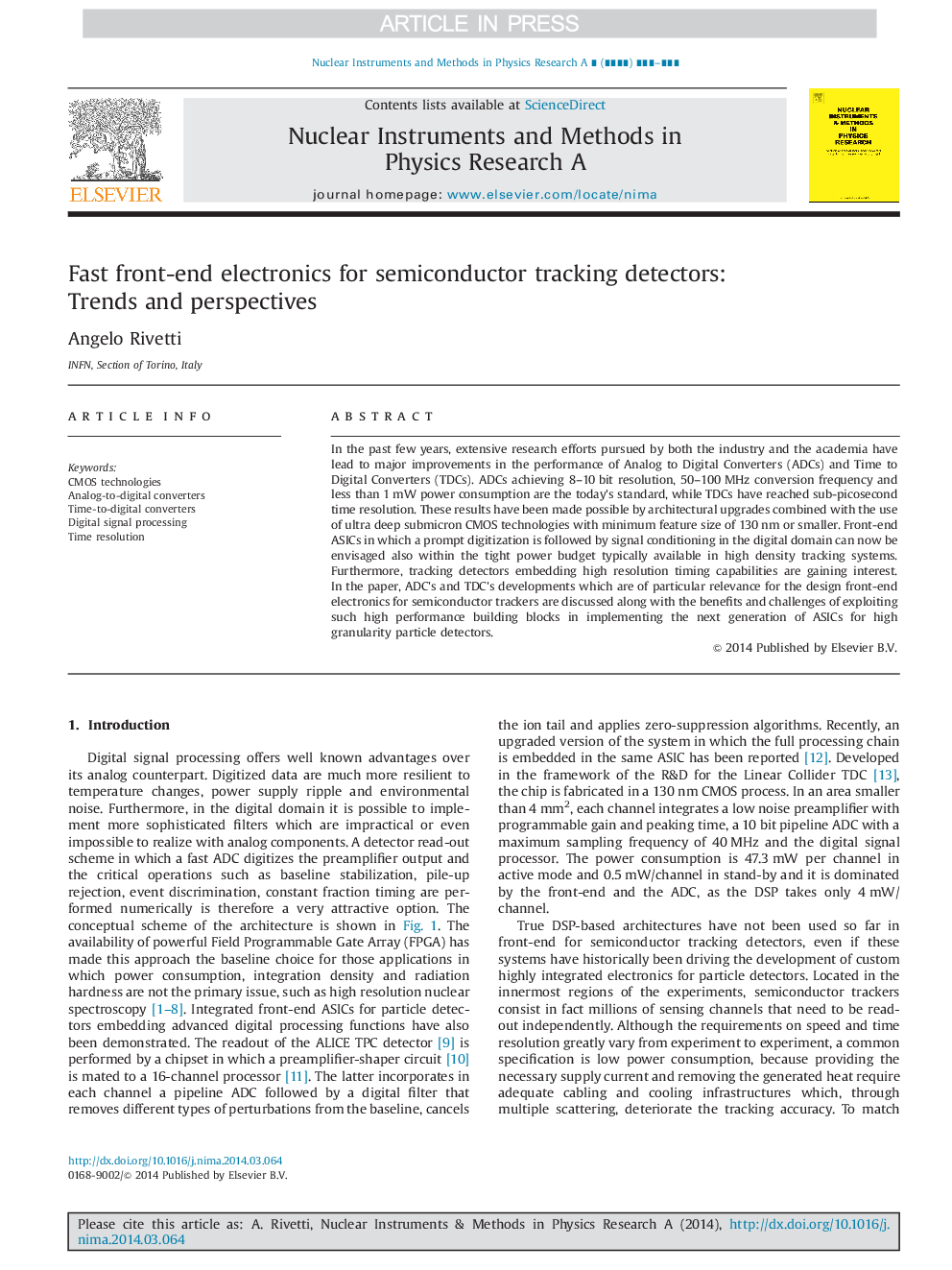| Article ID | Journal | Published Year | Pages | File Type |
|---|---|---|---|---|
| 8175696 | Nuclear Instruments and Methods in Physics Research Section A: Accelerators, Spectrometers, Detectors and Associated Equipment | 2014 | 7 Pages |
Abstract
In the past few years, extensive research efforts pursued by both the industry and the academia have lead to major improvements in the performance of Analog to Digital Converters (ADCs) and Time to Digital Converters (TDCs). ADCs achieving 8-10 bit resolution, 50-100 MHz conversion frequency and less than 1 mW power consumption are the today׳s standard, while TDCs have reached sub-picosecond time resolution. These results have been made possible by architectural upgrades combined with the use of ultra deep submicron CMOS technologies with minimum feature size of 130 nm or smaller. Front-end ASICs in which a prompt digitization is followed by signal conditioning in the digital domain can now be envisaged also within the tight power budget typically available in high density tracking systems. Furthermore, tracking detectors embedding high resolution timing capabilities are gaining interest. In the paper, ADC׳s and TDC׳s developments which are of particular relevance for the design front-end electronics for semiconductor trackers are discussed along with the benefits and challenges of exploiting such high performance building blocks in implementing the next generation of ASICs for high granularity particle detectors.
Related Topics
Physical Sciences and Engineering
Physics and Astronomy
Instrumentation
Authors
Angelo Rivetti,
